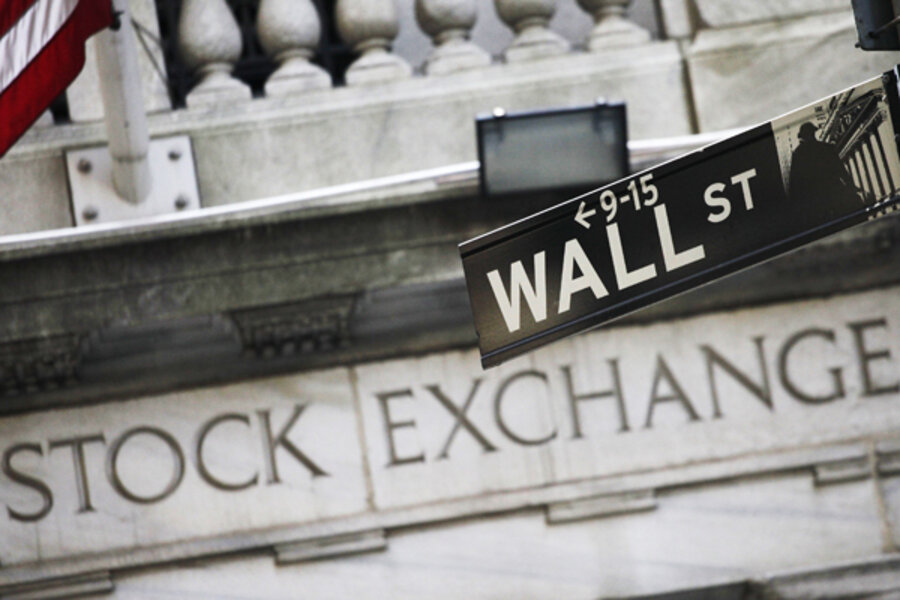Timeline on the Great Recession
2006 - July: US home prices peak after decades of financial deregulation and government promotion of home ownership.
2007 - April 2: New Century Financial Corp., a major subprime lender, files for bankruptcy.
Oct. 9: The stock market hits an all-time high, with the Dow at 14,164.
December: The recession officially begins. The unemployment rate stands at 5 percent.
Dec. 12: The Fed creates a Term Auction Facility to lend to ailing financial institutions.
2008 - Jan. 30: The Fed reduces short-term interest rates for the fifth time in four months, to 3 percent. (The rate was 5.25 in September 2007.)
Feb. 13: President George W. Bush signs the Economic Stimulus Act of 2008, which gives individuals a tax rebate and encourages business investment.
March 16: Brokerage firm Bear Stearns collapses and is bought out by JPMorgan Chase.
April 30: The Fed reduces short-term interest rates to 2 percent.
Sept. 7: The federal government takes over mortgage giants Fannie Mae and Freddie Mac.
Sept. 15: Lehman Brothers files the largest bankruptcy case in US history.
Sept. 16: The Fed bails out insurance giant AIG.
Oct. 3: Bush signs into law an emergency bailout package that establishes the $700 billion Troubled Asset Relief Program (TARP).
Oct. 6-10: The Dow suffers its worst weekly loss in history, falling 1,874 points, or 18 percent.
Oct. 28: The US Treasury gives out the first TARP money, totaling $125 billion, to nine banks.
Oct. 29: The Fed's short-term interest rate, after several more drops, hits 1 percent.
Nov. 23: The US government unveils a massive rescue package for Citigroup.
Nov. 25: The Fed creates a program (Term Asset-Backed Securities Lending Facility, or TALF) to support owners of securities backed by credit-card debt, student loans, auto loans, and small-business loans.
Dec. 16: For the first time in history, the Fed lowered its benchmark interest rate to zero.
Dec. 19: The government bails out General Motors and Chrysler, offering an initial $13.4 billion from the TARP fund.
2009 - Jan. 16: The government unveils a huge aid package for Bank of America, which includes $20 billion in bailout money and $100 billion in guarantees.
Feb. 17: President Obama signs into law a $787 billion stimulus package that includes tax cuts and money for infrastructure, schools, health care, and green energy.
Feb. 25: The Fed and other agencies announce they will be conducting 'stress tests' to see if banks need more capital.
March 9: The Dow hits the low point of the recession, closing at 6,547 – down nearly 54 percent from its Oct. 9, 2007, high.
June 1: General Motors files for bankruptcy and says it will close 14 US plants.
June: The recession officially ends after 18 months, making it the longest downturn in postwar history.
Oct. 2: The unemployment rate peaks at 10 percent, hitting double digits for the first time in 26 years.
2010 - July 21: Obama signs into law a sweeping reform of the financial system – the Dodd-Frank Wall Street Reform and Consumer Protection Act.
Dec. 31: The number of home foreclosures in one year hits a peak at 2.9 million properties.
2011 - March 4: Unemployment falls below 9 percent.
Aug. 5: Standard & Poor's takes the unprecedented step of downgrading the US government's credit rating from AAA to AA+.
2012 - Aug. 2: The Dow hits a new high: 15,658.
Sept. 7: Unemployment falls below 8 percent, the lowest point since January 2009.
Sources: Federal Reserve Bank of St. Louis, RealtyTrac, Bureau of Labor Statistics





